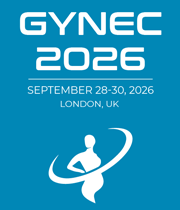Implantation
Implantation is the process of an embryo attaching to the inner lining of a woman's uterus. It typically occurs 6-12 days after fertilization of the egg by a sperm cell. The embryo, now known as a blastocyst, is made up of two distinct cell types: the outer layer, called the trophoblast, and the inner cell mass, which will eventually form the fetus. The implantation process begins when the blastocyst hatches out of its protective shell and makes contact with the endometrium, the inner lining of the uterus. During this contact, the trophoblast begins to secrete enzymes that break down the endometrium and allow the blastocyst to penetrate into the endometrial lining. The trophoblast also secretes molecules that prevent the mother’s immune system from rejecting the embryo. Once the embryo has penetrated into the endometrium, it begins to attach itself to the uterine wall and develop a placenta. The placenta serves as a vital connection between the mother and the developing embryo, providing it with oxygen, nutrients, and hormones.

Neda Zarrin-Khameh
Baylor College of Medicine, United States
Marlen Sulamanidze
Total Charm Clinic, Georgia
Mohamed M Hosni
London North West University Healthcare NHS Trust, United Kingdom
Neda Zarrin-Khameh
Baylor College of Medicine, United States
Marlen Sulamanidze
Total Charm Clinic, Georgia
Mohamed M Hosni
London North West University Healthcare NHS Trust, United Kingdom




Title : Evaluate the changes in SP-D levels in plasma during different phases of the menstrual cycle recruited from the Well- Adult Surfactant Protein Study (WASP)
Natnicha Kitti udom, University College London, Thailand
Title : Synergistic antifibrotic potential of protocatechuic acid and D-Carvone in liver protection
Ling Yin, Hefei Comprehensive National Science Center, China
Title : Pathologic findings in women with atypical glandular cells on Pap test
Neda Zarrin-Khameh, Baylor College of Medicine, United States
Title : Non-ablative radiofrequency for pelvic floor dysfunction and female intimate anti-aging: a 6-month prospective multi-centre cohort objectiv
Shaadaiti Wufuer, First Affiliated Hospital of Xinjiang Medical University, China
Title : Benign gynecological conditions and lifetime contraceptive patterns: a population-based analysis of the 2022–2023 national survey of family growth
Mayi Gnofam, Stony Brook University, United States
Title : Hysteroscopic endometrial resection with resectoscope versus Novasure ablation: A look at patient satisfaction with treatment of abnormal uterine bleeding and rates of progression to hysterectomy
Genevieve Kan, West Gippsland Healthcare Group, Australia